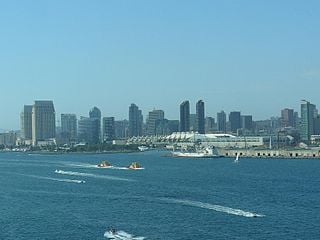California is leading the field it seems, in getting laws passed to help bring it to a greener, more sustainable state. The frontline lawmakers responsible for getting key greenhouse-gas-emissions-reduction legislation passed, plus all those keeping a close eye on related activities, deserve praise. But being among the nation’s more notorious dirty – and harmful – air offender states, California will definitely have its work cut out to meet prescribed greenhouse gas reduction targets.

The legislation referred to here, consists of two bills: California Assembly Bill 32 (the Global Warming Solutions Act of 2006) and California Senate Bill 375 (the Sustainable Communities and Climate Protection Act of 2008). Of course, only as strong as its weakest link, implementation needs to be carried out in a manner that guarantees success. And on that point, if targets are successfully met, then the implication is that similar legislation and corresponding programs could be implemented elsewhere.
San Diego, meanwhile, has been in the spotlight. It isn’t just that the southern California community was the very first in the state (and America) to have its RTP/SCS (Regional Transportation Plan/Sustainable Communities Strategies) plan approved, but that it was later rejected because it violated state law.
“Superior Court Judge Timothy Taylor ruled [Dec. 3, 2012] that the San Diego Association of Governments violated state law by failing to fully account for, and take steps to reduce, climate pollution in its environmental review of the region’s long-term transportation plan,” according to information brought to bear in a TransitSanDiego news release.
“[San Diego Association of Governments’] 2050 Regional Transportation Plan/Sustainable Communities Strategy will increase climate-disrupting greenhouse gas emissions from development and transportation through mid-century, at precisely the time the best science — reflected in a landmark executive order signed by former Governor Arnold Schwarzenegger — shows dramatic reductions are necessary to avoid dangerous climate disruption.”
Ultimately, “As Judge Taylor’s ruling indicates, SANDAG’s failure to address the severe impacts of its long-term transportation plan on global climate change subverted the overarching purpose of S.B. 375,” according to information TransitSanDiego presented in the release.
As I see it far too much emphasis had been placed on highways while not nearly enough had been on transit, transit-oriented development, walking and biking and the like as a means to enable the San Diego region to meet its RTP/SCS goals.
In my way of thinking, though, what’s needed is greater awareness and promotion of public transit and mixed-use, high-density, pedestrian-friendly, location-efficient transit-oriented development compared to what currently exists, not just in San Diego but in all major metropolitan areas countrywide. This modern, highly efficient transportation and land-use model, if carried out “smartly” (presumably how the term “smart growth” came into being), the need to drive is lower, thereby lowering vehicle miles traveled or VMT and consequently there will be fewer emissions released into the air from the transportation sector.
As renowned architect, urban designer and founding Congress for New Urbanism member Peter Calthorpe, in “Transit: The Greenest Technology,” put it:
“The relationship among transit, urbanism, travel behavior, and carbon emissions is complex but can be summarized with one key quantifiable metric, vehicle miles traveled (VMT)—effectively, the amount we drive. ….The most significant variables in all this are the walking and transit opportunities of urbanism, a compact development form, and land use patterns that bring destinations closer together.”
– Alan Kandel
Every tme I experience yet another California or US city laid out for automobile transportation exclusively I cannot help viewing it as tragic. It is sad that planners have chosen to completely ignore the idea of using other modes of transportation.
Personally I would prefer not to drive everywhere. The chore of parking often causes me to procrastinate various errands. I find going places without using the car to be quite liberating. It is possible, but not always practical, and sometimes takes getting used to. Just not having to keep track of your car – where it is parked, its security, the time limit for parking – is great, and makes up for additional times required for oher modes in most cases.
During the years when bicycling was increasing in popularity, the authorities responded by constructing miles of new bike lanes – by painting white stripes on existing streets. Thanks a lot for nothing. There are many communities in California which if they only had a cross-town bikeway you could get around town by bicycle faster than you can by car.